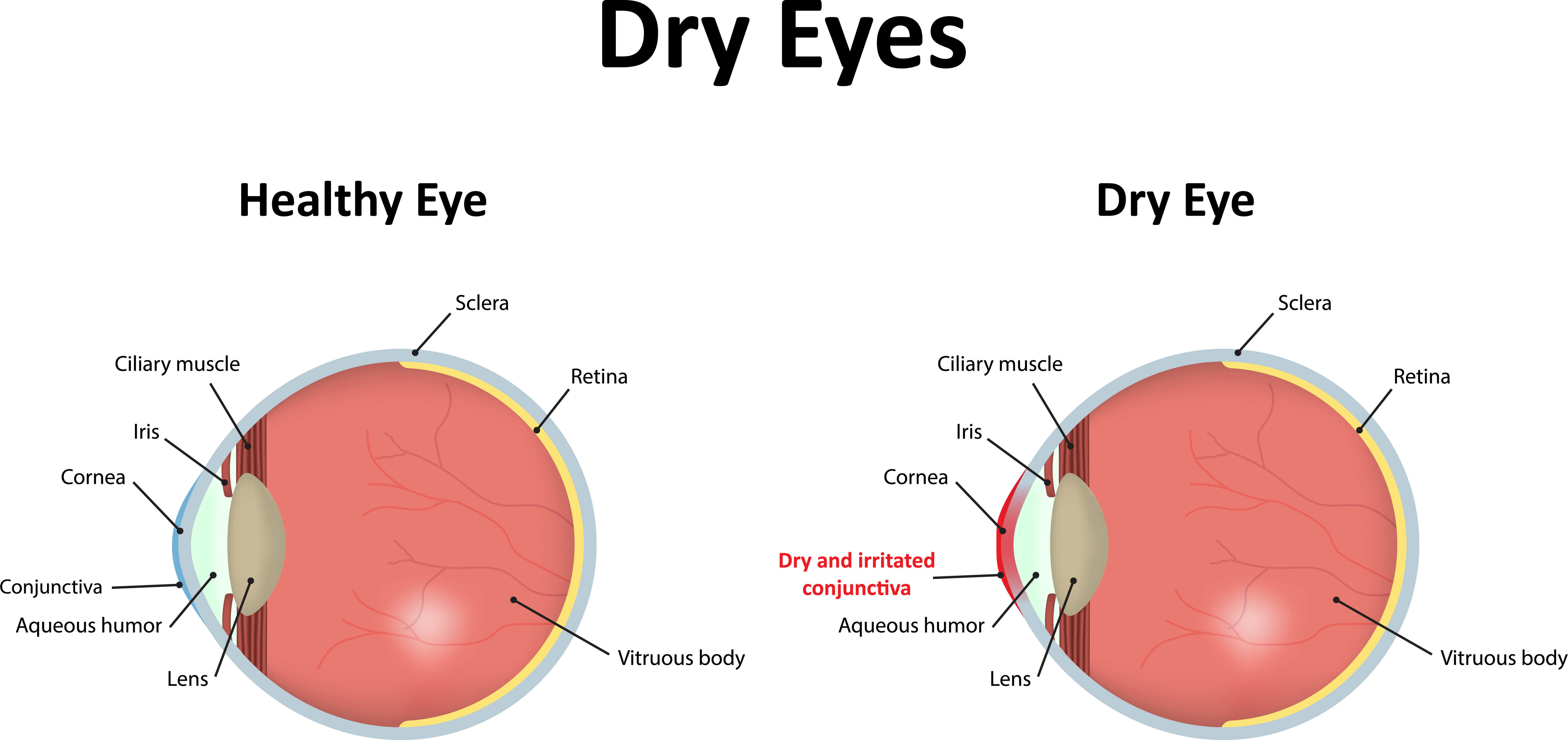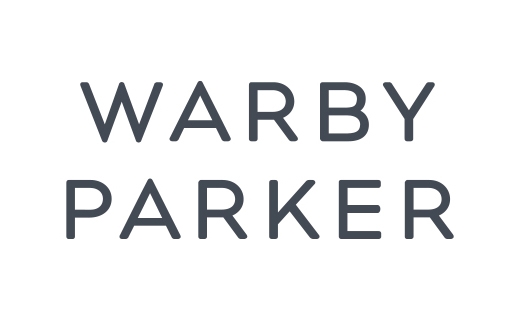Updated on January 30, 2025
The 10 Best Contact Lenses for Dry Eyes in 2025


Vision Center is funded by our readers. We may earn commissions if you purchase something via one of our links.
Dry eye is a common eye condition. Approximately one in four people experience its symptoms, including over 50 percent of contact lens wearers.1,2
Contact lenses can be one of the causes of dry eye. They can also worsen a person's symptoms. Fortunately, the technology for contact lenses has advanced significantly.
According to Dr. Molly King, OD FAAO, "The best contact for patients with dry eye is a daily disposable lens. This eliminates the need for contact lens solutions and preservatives, and prevents protein build-up on the lenses."
Meet the Expert
Dr. Molly King is a residency-trained optometrist in Colorado. She currently works at a pediatric clinic and owns SimplEye, a telehealth service for patients with dry eye. She is a fellow of the American Academy of Optometry and a member of the American Optometric Association and Colorado Optometric Association.
However, there are other factors to consider, Dr. King adds. Eye doctors will perform a contact lens fitting and consider:
- The fit of the lens
- Lens movement
- Lens material
- DK value (oxygen permeability)
These are especially important for long-term contact lens wear and use.
| Top Recommendations from an Optometrist | |
|---|---|
| Best Overall - | Acuvue Oasys 1-Day |
| Best Weekly/Biweekly - | Acuvue Oasys |
| Best Monthly - | Acuvue Vita |
| Best Daily Disposable - | Acuvue Oasys 1-Day |
| Best for Heavy Screen Users - | Biofinity Energys |
| Best for Astigmatism - | Acuvue Oasys 1-Day for Astigmatism |
| Best for High Astigmatism - | Biofinity XR Toric |
| Best Multifocal - | Bausch + Lomb Ultra for Presbyopia |
| Best for Sensitive Eyes - | Acuvue Oasys 1-Day |
| Best Colored Lenses - | Air Optix Colors |
*NOTE: It's important to know that contact prescriptions and glasses prescriptions are different. Your current glasses prescription won't work for contact lenses. Make sure you have a professional contact lens fitting exam from an eye doctor before purchasing lenses from online retailers.
10 Best Contact Lenses for Dry Eyes in 2024
We asked Dr. King what the best contacts for dry eyes are.
Here are her choices:
Best Overall: Acuvue Oasys 1-Day

Protein, calcium, lipids, and other substances can build up on reusable lenses. Daily lenses are discarded after one use, which eliminates this possibility.
Acuvue Oasys are Dr. King's top recommendation for people with dry eye. HydraLuxe Technology lets your tears hydrate the lens as well as your eye. This helps keep them moist all day.
Lens Features:
- High UV-A and UV-B protection
- HydraLuxe Technology moisturizes the lens like your eye
- 62% senofilcon A; 38% water
- Manufacturer: Johnson & Johnson
Best Weekly/Biweekly: Acuvue Oasys

Weekly contact lenses can be worn for one to two weeks, depending on your eyes’ response to the lens. Acuvue Oasys lenses are built with HYDRACLEAR® PLUS technology. This helps to stabilize your tear film, resulting in less dryness.
Lens Features:
- Highest UV protection of any contact lens
- BLINK STABILIZED® design to keep contacts in place
- Material: 62% senofilcon A; 38% water
- Manufacturer: Johnson & Johnson
Best Monthly: Acuvue Vita

Acuvue Vita lenses were designed to help alleviate dry eye symptoms that monthly contact lens wearers experience. Their HydraMax Technology maximizes and maintains moisture throughout the lens from week 1 to week 4.
Acuvue Vita lenses were designed to help alleviate dry eye symptoms that monthly contact lens wearers experience. Their HydraMax Technology maximizes and maintains moisture throughout the lens from week 1 to week 4.
Lens Features:
- The highest level of UV protection‡ available in a contact lens
- HydraMax Technology
- Material: 59% senofilcon C; 41% water
- Manufacturer: Johnson & Johnson
Best Daily Disposable: Acuvue Oasys 1-Day

Acuvue Oasys tops this category as well. If you struggle with contact lens-induced dry eye, try these lenses.
Lens Features:
- High UV-A and UV-B protection
- HydraLuxe Technology moisturizes the lens like your eye
- 62% senofilcon A; 38% water
- Manufacturer: Johnson & Johnson
Best for Heavy Screen Users: Biofinity Energys

Eye tiredness and dryness are common symptoms caused by screen use. The Biofinity Energys lens was designed for people who use digital devices daily.
The Digital Zone Optics® lens design helps you shift focus from your screen to your natural environment with less effort, reducing eye fatigue. They also feature Aquaform® technology that attracts and binds water throughout the lens.
Lens Features:
- Digital Zone Optics® lens design to reduce eye fatigue
- Aquaform® Technology to minimize eye dryness
- Material: comfilcon A 52%; 48% water
- Manufacturer: CooperVision
Best for Astigmatism: Acuvue Oasys 1-Day for Astigmatism

The Acuvue Oasys 1-Day contact lenses provide the same benefits and dry eye relief for people with astigmatism.
Lens Features:
- High UV-A and UV-B protection
- HydraLuxe Technology moisturizes the lens like your eye
- 62% senofilcon A; 38% water
- Manufacturer: Johnson & Johnson
Best for High Astigmatism: Biofinity XR Toric

Biofinity XR Toric can correct very strong astigmatism; ±10.50D to ±20.00D (sphere) and to -5.75 (cylinder). This is some of the strongest vision correction in a contact lens. People who couldn't wear contacts before might be able to use these lenses.
Lens Features:
- Can correct prescriptions up to +/-20.00D (sphere) and -5.75 (cylinder)
- Aquaform Technology for high breathability and wettability
- 52% comfilcon A; 48% water
- Manufacturer: CooperVision
Best Multifocal: Bausch + Lomb ULTRA for Presbyopia

If you have presbyopia (farsightedness) and want to wear contact lenses, you’ll need multifocal lenses.
Dr. King recommends Bausch + Lomb ULTRA for Presbyopia. They have a unique 3-Zone Progressive design. This gives you clear vision up close, far away, and in between.
MoistureSeal technology helps the lenses retain 95% moisture for up to 16 hours.
Lens Features:
- 3-Zone Progressive design for clear vision close, far, and in between
- MoistureSeal technology which maintains 95% of moisture for 16 hours
- Material: 54% samfilcon A; 46% water
- Manufacturer: Bausch + Lomb
Best for Sensitive Eyes: Acuvue Oasys 1-Day

Similar to other categories, Acuvue Oasys 1-Day tops this one. Sensitive or dry eyes can benefit from daily disposable lenses and this is many eye doctors' top choice for people with sensitive eyes.
Lens Features:
- High UV-A and UV-B protection
- HydraLuxe Technology moisturizes the lens like your eye
- 62% senofilcon A; 38% water
- Manufacturer: Johnson & Johnson
Best Colored Lenses: Air Optix Colors

Air Optix Colors are monthly lenses that transform the color of your eyes. They can be worn with or without eye correction.
They are made from a state-of-the-art silicone hydrogel material that allows a high oxygen flow. They also feature SmartShield® technology that prevents protein deposit buildup.
Lens Features:
- 12 colors to choose from
- SmartShield® Technology
- Material: 67% polymer (lotrafilcon B); 33% water
- Manufacturer: Alcon
Why Trust Us?
The Vision Center team spends several hours researching and writing every review page. We base all of our recommendations on:
- Customer reviews
- Product details and specifications
- Company reputation and reports
- Contemporary scholarly articles
Every review is checked, edited, and ultimately approved by our staff optometrist Dr. Melody Huang, O.D.
Always get an eye exam and contact lens fitting from an eye care professional before purchasing contact lenses online. Your eye doctor can provide you with professional medical advice band recommendations.
What to Consider in Contact Lenses for Dry Eyes
These are the factors you should consider before buying contact lenses:
Custom Fit
We recommend getting a professional contact lens fitting from a licensed eye doctor. They will perform an eye exam to check your prescription. They may also perform tests to determine your general eye health.
After the eye exam, they will gather additional information to determine your best contact lenses. This may include:
- Corneal measurements (with a keratometer or a corneal topography)
- Corneal health evaluation (using a biomicroscope/slit lamp)
- Tear film evaluation
- Questions about your lifestyle
Once the exam is completed, they will make recommendations based on the outcome. Some eye doctors may provide free trial lenses.
Water Content
Many assume that high water content is better for dry eyes, but it’s the opposite in most cases. Lenses with high water content can draw water away from the eyes. They are also thicker and may irritate your eyes, especially when blinking.
Breathability
Contacts cover your eyes and can prevent oxygen from reaching your cornea. The lens material and thickness will determine its oxygen permeability. The more oxygen that reaches your eyes, the better.
Care & Maintenance
The buildup of proteins, lipids, bacteria, and other substances on your lenses is one of the most common causes of dryness. Improper cleaning can increase your chances of dry eye or eye infection.
It’s crucial to take good care of your contacts. If you wear weekly or monthly contacts, clean your contacts and use proper contact lens solutions. However, daily contact lenses minimize buildup and keep your eyes healthy with minimal effort.
What Causes Dry Eyes?
Dry eye is a chronic condition. It is characterized by insufficient lubrication of your eyes. This is usually caused by a lack of tears or a poor-quality tear film.

Common causes of dry eye include:
Old Age
When you get older, your eyes naturally produce fewer tears. This can lead to dry eye symptoms such as burning, itching, and a feeling of grittiness.
Environmental Factors
Dry air, wind, smoke, and other environmental irritants can reduce your eyes' moisture. This can cause dry eye symptoms.
Heavy Screen Usage
Staring at a computer or phone screen for long periods can reduce the amount of moisture in your eyes. Heavy screen usage results in less blinking, which can lead to dry eye symptoms.
Contact Lenses
Wearing contact lenses may also result in dry eyes because the lenses limit and block oxygen flow to your eyes.
Medications
Certain medications, such as antihistamines, painkillers, and beta-blockers, can reduce tear production and cause dry eye symptoms.
Eye Surgery
In some cases, surgeons may damage the tear glands during eye surgery, resulting in dry eyes.
Symptoms of Dry Eye
Learning about dry eye symptoms can help determine if you need to seek treatment. Common symptoms of dry eye include:
- Burning, stinging, or scratchy sensation in the eyes
- Eye redness
- Blurred vision
- Excessive tearing (in response to the irritation)
- Light sensitivity
- Discomfort when wearing contact lenses
Summary
Dry eyes can be a very uncomfortable condition. If you experience any of these symptoms, it's important to seek treatment from a professional. People who wear contacts may also opt for special contact lenses designed for dry eyes. This will help reduce the discomfort and irritation associated with the condition.
In this article
13 sources cited
Updated on January 30, 2025
Updated on January 30, 2025
About Our Contributors
Michael, a lead content writer for Vision Center, brings eight years of experience in medical copywriting and advanced research methodologies. With a B.A. in English and Linguistics from the University at Buffalo, he specializes in creating detailed, evidence-based content, particularly in the field of eye health, to educate readers and guide them toward appropriate treatments.
Dr. Melody Huang is an optometrist and freelance health writer with a passion for educating people about eye health. With her unique blend of clinical expertise and writing skills, Dr. Huang seeks to guide individuals towards healthier and happier lives. Her interests extend to Eastern medicine and integrative healthcare approaches. Outside of work, she enjoys exploring new skincare products, experimenting with food recipes, and spending time with her adopted cats.






